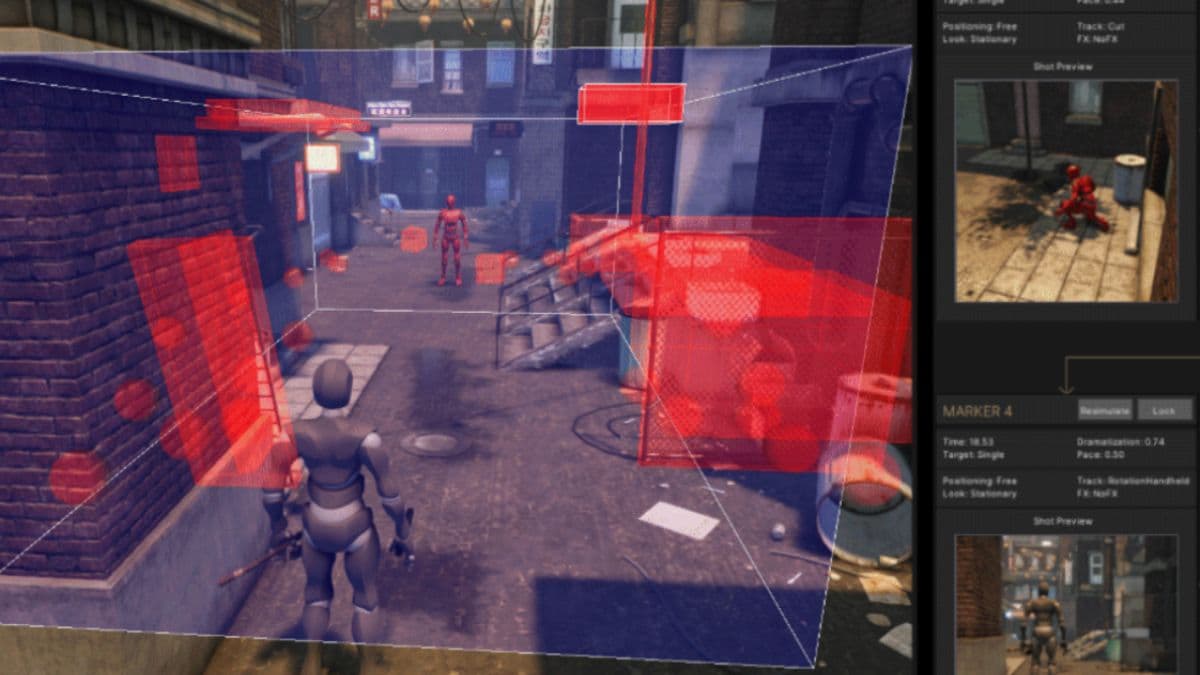
Nowadays, more and more video games incorporate non-interactive sequences, in which the game is paused, while critical events or conversations between the characters are narrated.
These kinds of scenes can receive a more cinematic treatment, thanks to an AI that can help semi-automate the process of directing and managing cameras.
Cine-AI: generation of video game cinematic scenes in the style of human directors
This artificial intelligence is Cine-AI, a set of semi-automatic cinematographic tools capable of generating scenes in video games in the style of some experienced audiovisual director, following their orders.
This system works by combining a highly configurable design-time workflow with runtime support, a quality that allows scenes to unfold dynamically based on the state of the game.
During the programming process of a video game, Cine-AI’s new storyboard interface allows the user to adjust the properties of the simulation and modify the final composition of the scene.
This tool was implemented in the popular Unity video game engine, which has given life to famous titles such as Pokémon Go and Super Mario Run on mobile phones, Cuphead on various other media, plus countless independent games for multiple platforms.
When subjected to tests, according to the researchers behind the project, its users pointed out that Cine-AI can generate cinematographic scenes that people can correctly associate with the cinematographic style of some famous director.
“Through two user studies, each employing quantitative and qualitative measures, we show that Cine-AI generates cinematics that people correctly associate with a target director, while also providing above-average usability”points out the report of the research behind this project.
Throughout several experiments with AI, this exercise has been attempted. However, even before the advent of Cine-AI, the output generated often lacked the internal consistency and uniformity in style that characterizes professional human directors.
Hand in hand with this tool, we could see in the future eminent film directors debuting in the world of video games, contributing their artistic vision or at least, if they are not directly involved, we could see more elaborate references and tributes to the cinema of certain authors.
For now, for movie and game development enthusiasts, the team behind this initiative released the Cine-AI code on GitHub, including an example Unity 3D scene, alongside a basic cutscene containing multiple humanoid assets conversing in a living room-like environment. Also provided alongside this are 2 example director data sets, to test the Quentin Tarantino and Guy Ritchie lens in a demo, but manipulable, environment.




